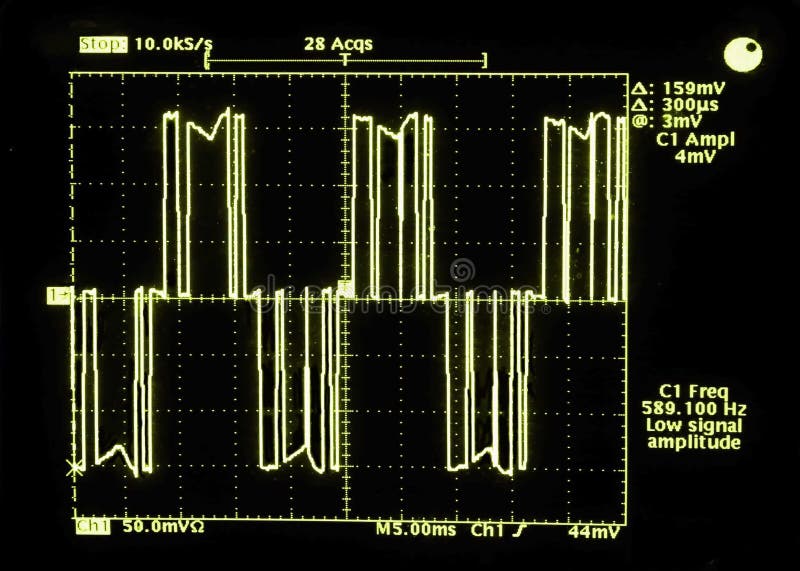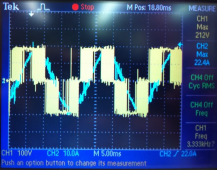If we are utilizing solar energy for off grid pumping meaning that the borehole pump is being fed by a PV field and operated by a solar VFD only, how is the reactive power necessary to run the AC motor of the pump generated, noting that PV panels are capable of providing active power only.
You are using an out of date browser. It may not display this or other websites correctly.
You should upgrade or use an alternative browser.
You should upgrade or use an alternative browser.
Reactive Power in Off Grid Solar Pumping
- Thread starter Solar DIY
- Start date
Hedges
I See Electromagnetic Fields!
- Joined
- Mar 28, 2020
- Messages
- 20,851
VFD may adjust PWM so motor is a "real" load, no reactive power. Unlike when full AC sine wave voltage is applied. Note that VFD doesn't have massive inrush, either.
PV produces DC, operating around maximum power point if all power needed.
With regular inverters, power is store in a capacitor and voltage ripples when supplying single phase (I've measured about 1% or 2% ripple.)
Inverter can operate in 4 quadrants, not just driving AC, but sourcing/sinking current when voltage is either polarity. So good inverters can drive inductive or capacitive load.
VFD, instead of driving a sine wave voltage, puts PWM pulses of full capacitor voltage onto the motor windings. "On" time and period determines how much current flows.
Not that much different from inverters, which use PWM to synthesize sine wave, but have inductors to smooth it out.
Inverters, which contain capacitors and inductors, can provide reactive power to the grid as well:
PV produces DC, operating around maximum power point if all power needed.
With regular inverters, power is store in a capacitor and voltage ripples when supplying single phase (I've measured about 1% or 2% ripple.)
Inverter can operate in 4 quadrants, not just driving AC, but sourcing/sinking current when voltage is either polarity. So good inverters can drive inductive or capacitive load.
VFD, instead of driving a sine wave voltage, puts PWM pulses of full capacitor voltage onto the motor windings. "On" time and period determines how much current flows.
Not that much different from inverters, which use PWM to synthesize sine wave, but have inductors to smooth it out.
Inverters, which contain capacitors and inductors, can provide reactive power to the grid as well:
Once the frequency is adjusted by the VFD, say bring it down to say .5hz, remember the reactive characteristics of the pump is a function of the the frequency.
You can look up the equation of capacitance reactive as a function of frequency. Reduce the frequency the impedance increases thus draws less current.
Just make sure your pump is VFD compatible, running a normal induction motor with say a starting cap, at a frequency less than 60hz can destroy the motor/cap.
You can look up the equation of capacitance reactive as a function of frequency. Reduce the frequency the impedance increases thus draws less current.
Just make sure your pump is VFD compatible, running a normal induction motor with say a starting cap, at a frequency less than 60hz can destroy the motor/cap.
Hedges
I See Electromagnetic Fields!
- Joined
- Mar 28, 2020
- Messages
- 20,851
If you had a brush-type motor, the windings would be on the armature rather than the field, and commutation would happen automatically according to armature position. It speeds up so long as torque exceeds load. I think it would reach a point where it is predominately a "real" load, with inductive reactance only from leakage inductance.
An AC induction motor has rotating magnetic field with angular velocity imposed by frequency. The motor slips according to how much torque is required, and (I think) presents an inductive load. Perhaps sine wave voltage could be reduced to minimize excess current and approach being a real load. VFD, by varying PWM, I think accomplishes similar.
Powering a VFD, I see it drink gulps of current through diodes to charge capacitor.
Powering A/C, I expected sine wave current, got triangle instead. So take that "inductive reactance" description with a grain of salt.

 diysolarforum.com
diysolarforum.com
My 3-phase pool pump work down to about half speed. Below that, almost no water flow against backpressure of filter. When I had a 2-speed pump, that only worked with filter fairly clean.
An AC induction motor has rotating magnetic field with angular velocity imposed by frequency. The motor slips according to how much torque is required, and (I think) presents an inductive load. Perhaps sine wave voltage could be reduced to minimize excess current and approach being a real load. VFD, by varying PWM, I think accomplishes similar.
Powering a VFD, I see it drink gulps of current through diodes to charge capacitor.
Powering A/C, I expected sine wave current, got triangle instead. So take that "inductive reactance" description with a grain of salt.

Battery ripple current
After reading of someone tripping battery breakers at well below rating, I realized that could be due to pulses of current drawn by the inverter. Ideally capacitors would smooth out current draw so high frequency switching pulses and 60 Hz draw all came from the caps, and current from batteries...
My 3-phase pool pump work down to about half speed. Below that, almost no water flow against backpressure of filter. When I had a 2-speed pump, that only worked with filter fairly clean.
Yeah centrifugal pumps and jet pumps of deep well are two different beasts. Centrifugal pumps are designed around constant fixed speed for flow and pressure soon as you reduce speed it falls in its face.
VFD well pumps are designed more for constant pressure at different flow rates, frequency increases as flow demand is increased. So someone taking a shower isn’t upset if someone flushes a toilet.
VFD well pumps are designed more for constant pressure at different flow rates, frequency increases as flow demand is increased. So someone taking a shower isn’t upset if someone flushes a toilet.
Thank you all for such information. So lets say we have a three phase borehole pump that is withdrawing at full power 110 amps on each phase @ 400 V line to line. This means that the pump apparent power is around 76 kVA. Assuming that the power factor is 0.8, so the active power is 60 kw.
So the solar farm field shall provide an output of 60 Kw or 76 kw to have the pump running at full power?
So the solar farm field shall provide an output of 60 Kw or 76 kw to have the pump running at full power?
Hedges
I See Electromagnetic Fields!
- Joined
- Mar 28, 2020
- Messages
- 20,851
Actual power delivered, whether from engine turning shaft of a generator or PV delivering watts DC, would be active power plus losses. So I think closer to 60 kW.
Of course, rated power of PV panels under standard test conditions is greater what they deliver under nominal field conditions where they run hot in the sun. Clouds and dust/pollution obscure light. Some seasons and times of day, less light falls on the panels.
Is this a PV only system, no energy storage, no generator? PV array could be oversized so it provides what pump needs for several hours per day. Better, the VFD driving it varies motor speed according to available power. We can buy small residential solar pumping systems from Grundfos which do that, PV direct. Probably they exist for your size system also. "solar VFD" sounds like just that.
I don't think VFD driving 3-phase motor normally runs at a reduced power factor like 0.8, rather I would think it adjusts PWM width to close to 1.0 PF. I could be wrong. Some VFD are able to absorb power from load as well, providing braking like when an elevator is going down with load. My little one has a shorting link that can be replaced with resistive load, but I think some large ones could deliver power back to an AC grid. It could be, though that VFD does work with reactive power, and current flows back through transistors to capacitor part of each phase.
Does your system exist yet? Or do you have pictures of a neighbor's system?
Maybe I could measure waveforms of mine. But here are pictures from the web,, one idealized and the rest measured.

 www.dreamstime.com
www.dreamstime.com
Scope image in last one does seem to have a reactive component, not PF 1.0; current is shifted relative to voltage.

Of course, rated power of PV panels under standard test conditions is greater what they deliver under nominal field conditions where they run hot in the sun. Clouds and dust/pollution obscure light. Some seasons and times of day, less light falls on the panels.
Is this a PV only system, no energy storage, no generator? PV array could be oversized so it provides what pump needs for several hours per day. Better, the VFD driving it varies motor speed according to available power. We can buy small residential solar pumping systems from Grundfos which do that, PV direct. Probably they exist for your size system also. "solar VFD" sounds like just that.
I don't think VFD driving 3-phase motor normally runs at a reduced power factor like 0.8, rather I would think it adjusts PWM width to close to 1.0 PF. I could be wrong. Some VFD are able to absorb power from load as well, providing braking like when an elevator is going down with load. My little one has a shorting link that can be replaced with resistive load, but I think some large ones could deliver power back to an AC grid. It could be, though that VFD does work with reactive power, and current flows back through transistors to capacitor part of each phase.
Does your system exist yet? Or do you have pictures of a neighbor's system?
Maybe I could measure waveforms of mine. But here are pictures from the web,, one idealized and the rest measured.

This Oscilloscope Waveform is of the Output from a Variable Frequency Drive (VFD) that Powers an Ele Stock Photo - Image of troubleshoot, wave: 1474804
Photo about a Display Waveform Taken from an Oscilloscope. Image of troubleshoot, wave, scope - 1474804
Scope image in last one does seem to have a reactive component, not PF 1.0; current is shifted relative to voltage.

Last edited:
RCinFLA
Solar Wizard
- Joined
- Jun 21, 2020
- Messages
- 3,565
The VFD drive just needs enough capacitor filtering to avoid too much ripple current showing up on PV panels. Any ripple current load on PV panels just lowers their potential output power for given illumination conditions.If we are utilizing solar energy for off grid pumping meaning that the borehole pump is being fed by a PV field and operated by a solar VFD only, how is the reactive power necessary to run the AC motor of the pump generated, noting that PV panels are capable of providing active power only.
The VFD drive reduces rpm of pump, and therefore the power consumption that can be supported by PV illumination conditions. Trick is recognizing the motor is spinning and not in a locked rotor state. This is typically done by measuring AC ripple current to motor. Some older designs actually use a tachometer on motor but that is another component to go bad, reducing reliability.
Poorest reliability component is the electrolytic filter capacitors. Try to keep unit shaded with good air circulation to minimize heating of these capacitors.
Last edited:
Is this agricultural? Or municipal? That’s a lot of pump!!!Thank you all for such information. So lets say we have a three phase borehole pump that is withdrawing at full power 110 amps on each phase @ 400 V line to line. This means that the pump apparent power is around 76 kVA. Assuming that the power factor is 0.8, so the active power is 60 kw.
So the solar farm field shall provide an output of 60 Kw or 76 kw to have the pump running at full power?
Similar threads
- Replies
- 12
- Views
- 305
- Replies
- 4
- Views
- 286
- Replies
- 4
- Views
- 295


